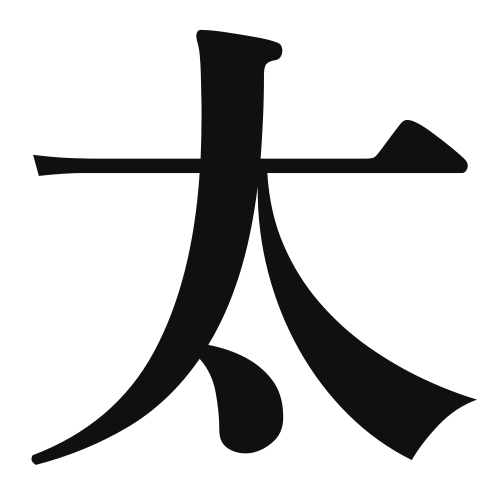1. Overview of Meaning
The kanji “太” (pronounced “tai” or “futo”) means “big” or “thick.” It is often used to describe size, quantity, or intensity in various contexts.
2. Formation and Radical
Formation of the Kanji: The kanji “太” is a pictogram that originally depicted a person with outstretched arms, symbolizing largeness or abundance. It is classified as a pictographic character.
Radical: The radical for “太” is also “太,” which is used in other kanji to convey similar meanings related to size or thickness.
3. Examples of Usage
Common Words and Phrases: Some frequently used words that include “太” are:
- 太陽 (taiyō) – sun
- 太い (futoi) – thick
- 太る (futoru) – to gain weight
Example Sentences in Daily Conversation:
- この木はとても太いです。 (Kono ki wa totemo futoi desu.) – This tree is very thick.
- 彼は最近太りました。 (Kare wa saikin furimashita.) – He has gained weight recently.
4. Synonyms and Antonyms
Similar Kanji: A similar kanji is “大” (dai), which also means “big” but is used in different contexts, such as in “大きい” (ōkii) meaning “large.” While both convey size, “太” specifically refers to thickness or fullness.
Opposite Kanji: The antonym of “太” is “細” (sai), which means “thin” or “slim.” This kanji is used to describe something that is narrow or slender.
5. Cultural and Historical Background
Relation to Japanese Culture: The concept of size and thickness is significant in Japanese culture, especially in relation to food and nature. For example, “太陽” (taiyō) symbolizes life and energy, reflecting the importance of the sun in agriculture.
Proverbs and Idioms: One common saying is “太く短く” (futoku mijikaku), which translates to “thick and short,” often used to describe a life lived fully but not for a long time.
